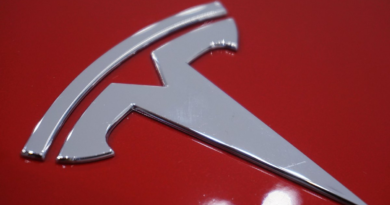Apple defends parts pairing as Oregon mulls right-to-repair bill
Oregon may soon become the latest state to pass right-to-repair legislation. Last month, Google lent its support in an open letter, calling Senate Bill 1596 “a compelling model for other states to follow.” The bill, sponsored by a sextet of state senators and representatives, was inspired in part by California SB 244, which Governor Gavin Newsom signed into law in October.
Apple openly supported that bill — a rare endorsement from a tech giant that loves playing it close to the vest. Cupertino is, however, less enthusiastic about certain inclusions in the Oregon legislation that were absent from the California law.
“Apple agrees with the vast majority of Senate Bill 1596,” John Perry, Apple senior manager, Secure System Design, said in a testimony to state lawmakers this week. “I have met with Senator [Janeen] Sollman several times, and appreciate her willingness to engage in an open dialogue. Senate Bill 1596 is a step forward in making sure that the people of Oregon, myself included, can get their devices repaired easily and cost effectively.”
Apple’s major sticking point with the proposed legislation centers around a policy known as “parts paring.” Both iFixit and PIRG (Public Interest Research Group) has criticized the policy, which requires the use of first-party components during the repair process. PIRG, which petitioned the FTC for a ban on the practice late last year, has called it “one of the most pernicious obstacles to right to repair.”
Apple, in turn, has staunchly defended the practice, insisting that the use of some third-party parts could present a security issue for users. T
“It is our belief that the bill’s current language around parts pairing will undermine the security, safety, and privacy of Oregonians by forcing device manufacturers to allow the use of parts of unknown origin in consumer devices,” said Perry. “It’s important to understand why Apple and other smartphone manufacturers use parts pairing. It’s not to make repair more difficult. It is, in fact, to make access to repair easier while also making sure your device — and the data stored on it — remain secure. Parts pairing also helps ensure your device’s optimal performance and the safe operation of critical components like the battery, after a repair.”
Not long after the California bill was passed, iFixit highlighted “seven iPhone parts can trigger issues during repairs” in a New York Times piece. That figure was more than double the three that were identified in 2017 and marked a rise of “about 20% a year since 2016, when only one repair caused a problem.” Apple does some support third-party replacement parts, like batteries and display, though these will often limit certain functionality.
The paper continues: “New batteries can trigger warning messages, replacement screens can disable a phone’s brightness settings, and substitute selfie cameras can malfunction.”
The element of the bill singled out by Apple reads, in part:
An original equipment manufacturer shall make available to an owner or independent repair provider on fair and reasonable terms and documentation, tool or part necessary to disable and reset any electronic security lock or other security function in consumer electronic equipment that is or must be disabled or that must be reset while diagnosing, maintaining or repairing the consumer electronic equipment.
. . .An original equipment manufacturer may not use parts pairing to: (A) Prevent or inhibit an independent repair provider or owner from installing or enabling the function of a replacement part or component of consumer electronic equipment, including a replacement part or component that the original equipment manufacturer has not approved; (B) Reduce the functionality or performance of consumer electronic equipment; or (C) Cause consumer electronic equipment to display unnecessary or misleading alerts or warnings about unidentified parts, particularly if the alerts or warnings cannot be dismissed.
In a recent conversation with TechCrunch, co-sponsor Senator Sollman describes closed door meetings, where Apple discussed its concerns over the parts pairing provision, describing frustration, while calling the hardware giant, “very private” in its dealings with the bill.
“People were coming to me with potential changes, and I felt like I was playing the game of operator, like I was being the one that was having to bring forward the changes, and not Apple themselves,” Sollman says. “That’s very frustrating. We entertained many of the changes that Apple brought forward that are in the California bill. There were two remaining items that were concerning to them. We’ve addressed one of them, because that was providing some ambiguity to the bill. And so I think the one part that . . . they will stand on the hill on is the parts pairing.”
In his testimony, Perry expressed specific concern over biometric sensors — a category that includes things like fingerprint readers and Face ID cameras.
“Under SB 1596’s current parts pairing wording, Apple could be required to allow third-party biometric sensors to work in our devices without any form of authentication, which could lead to unauthorized access to an individual’s personal data,” the Apple employee noted. “This would be an incredible disservice to consumers not just in Oregon, but worldwide, as we do not have the ability to restrict such provisions regionally.”
Certainly the concerns cited by Perry could potentially apply to the “substitute selfie cameras” alluded to in the Times piece.
For her part, Senator Sollman refers to parts pairing as “anti-consumer.”
“I’m not trying to stick it to [Apple] or anything,” she says. “I’m trying to make this consumer-friendly and so that we can have a policy that will work. I think that we have come to that place with Google, and I believe others that will soon [go public], as well. I think that Apple is probably going to stand strong on their parts pairing, because this would be the only policy in the U.S. that is not removing that.”



